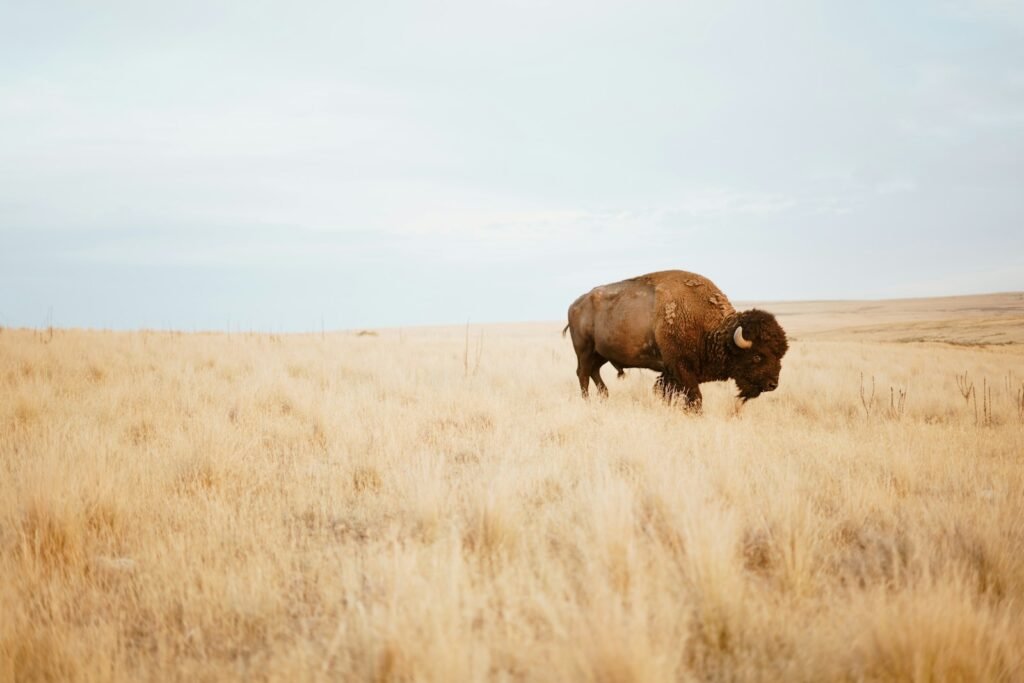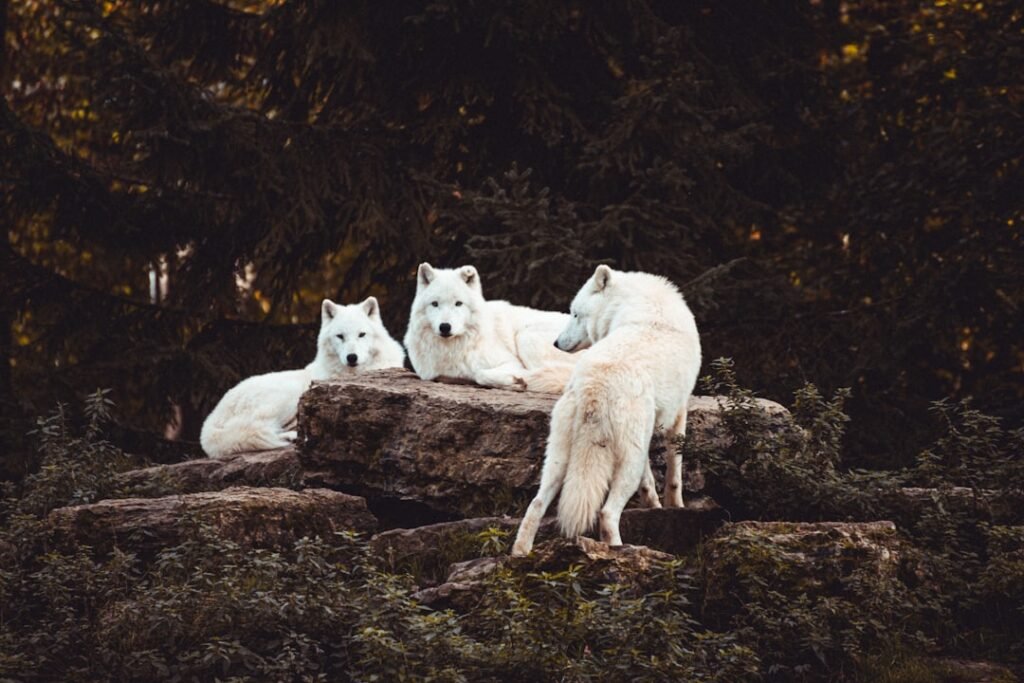Imagine stepping into a steaming, tangled world where the ground squishes beneath your feet and the air buzzes with ancient life. A place where giants lumbered through shadowy cypress groves, leaving enormous footprints in the mud. This isn’t some lost land from a fantasy novel—this is prehistoric Florida, a land teeming with megafauna that would make today’s alligators and panthers look like household pets. The story of Florida’s lost giants is a startling window into a wilder, more mysterious past. Let’s journey back to the days when mammoths, monster turtles, and saber-toothed cats ruled the swamps, painting the Sunshine State with tales of survival, rivalry, and extinction.
The Lost World Beneath Our Feet

Beneath modern Florida’s golf courses and highways lies a buried treasure trove of bones—a silent record of giants that once ruled the landscape. Ancient riverbeds, sinkholes, and peat bogs have preserved the stories of these swamp-dwellers for thousands of years. Fossil hunters sometimes stumble across a mammoth tusk or a giant sloth claw, revealing just how different Florida looked in the Ice Age. Excavations at places like the Aucilla River and the famous Page-Ladson site have uncovered layers of ancient life, each bone a clue to a vanished world. Standing in these muddy dig sites, you can almost feel the earth humming with the echoes of ancient giants.
Woolly Mammoths: Lords of the Wetlands
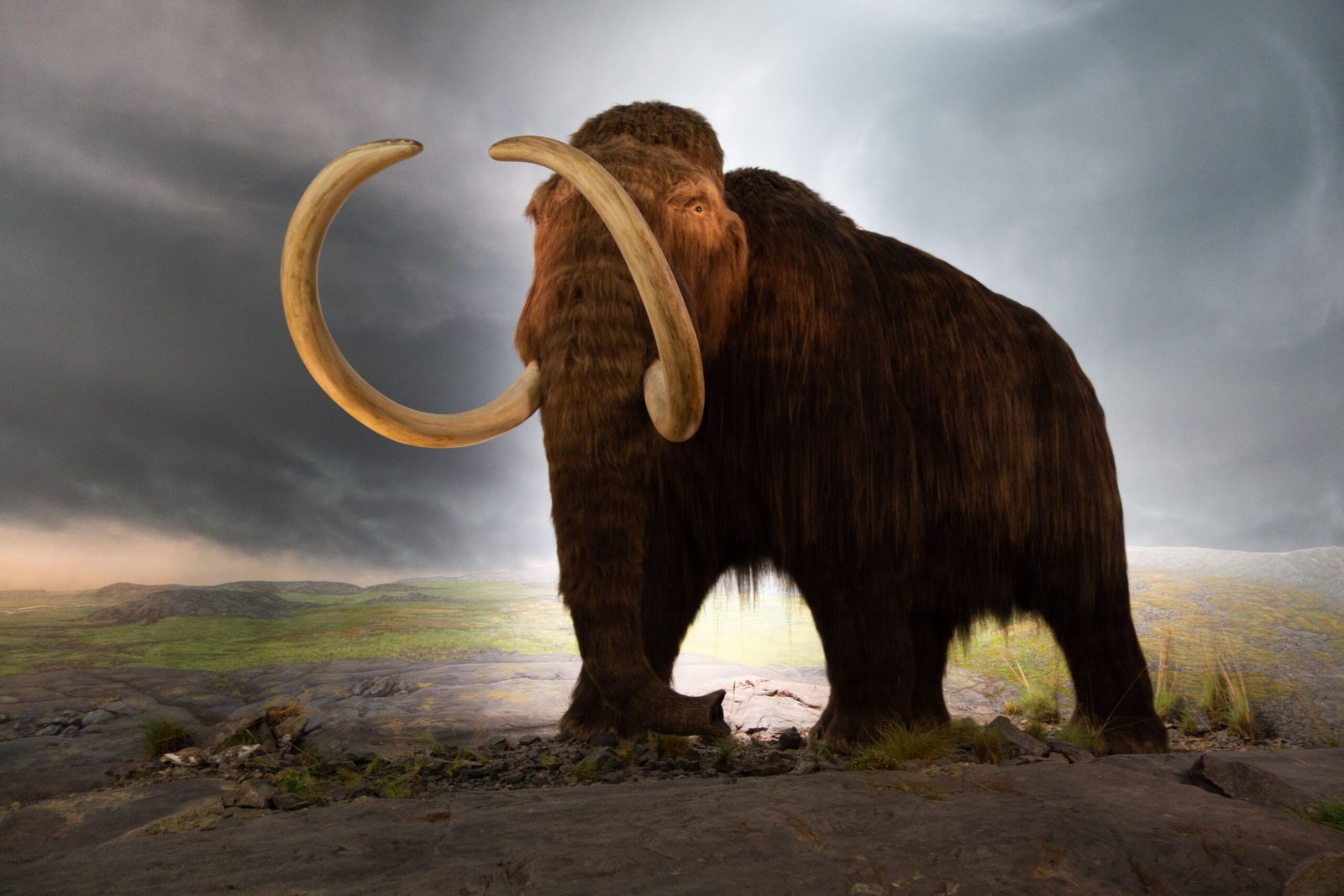
When most people think of mammoths, they picture icy tundras, but Florida’s mammoths were at home in steamy, lush wetlands. These enormous creatures, some weighing over six tons, roamed the swamps in small herds, using their curved tusks to strip bark and dig for roots. Their thick fur and fatty humps helped them survive the cooler periods of the Ice Age, but as the climate warmed, they struggled to adapt. Today, fossilized mammoth teeth and bones are sometimes uncovered during construction projects, a humbling reminder that giants once grazed where we now build homes and highways.
American Mastodons: Swamp Browsers Extraordinaire
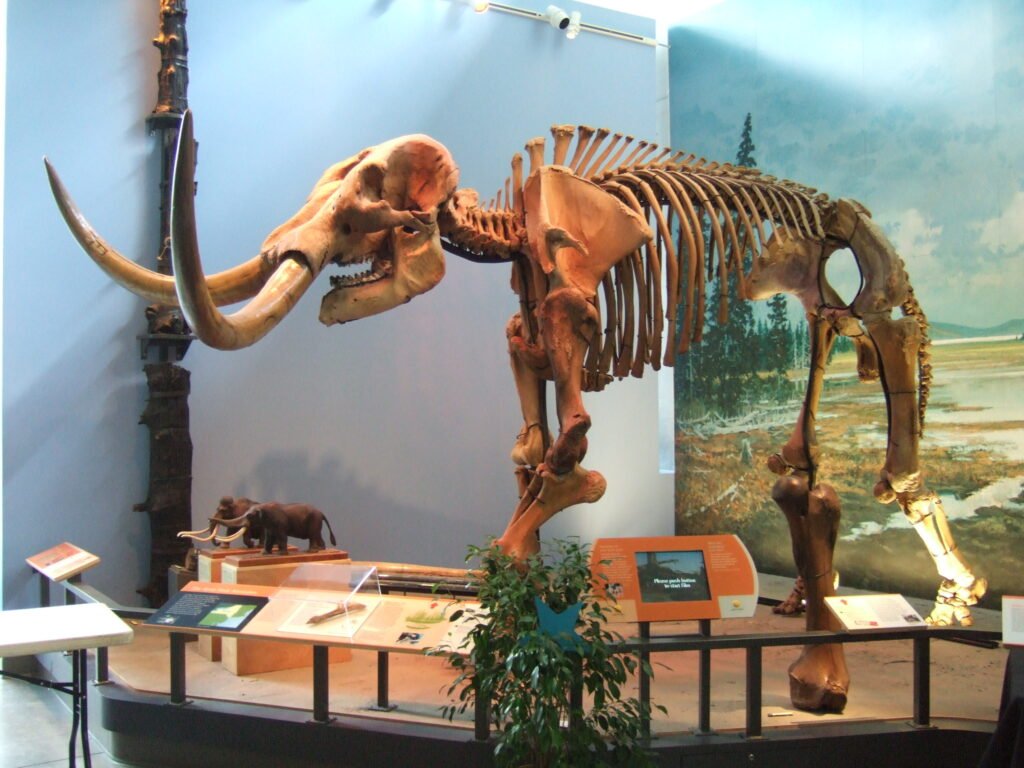
American mastodons, close cousins to mammoths but with flatter heads and different teeth, were also common in Florida’s ancient swamps. Unlike mammoths, mastodons loved browsing on shrubs and low-hanging branches, using their flexible trunks to tug at vegetation. Their molars were specially shaped to crush tough plant material—almost like giant, prehistoric salad chompers. These animals often left behind piles of dung, which helped fertilize the landscape and spread seeds, shaping the swamps for future generations of plants and animals.
Giant Ground Sloths: The Slow-Motion Titans
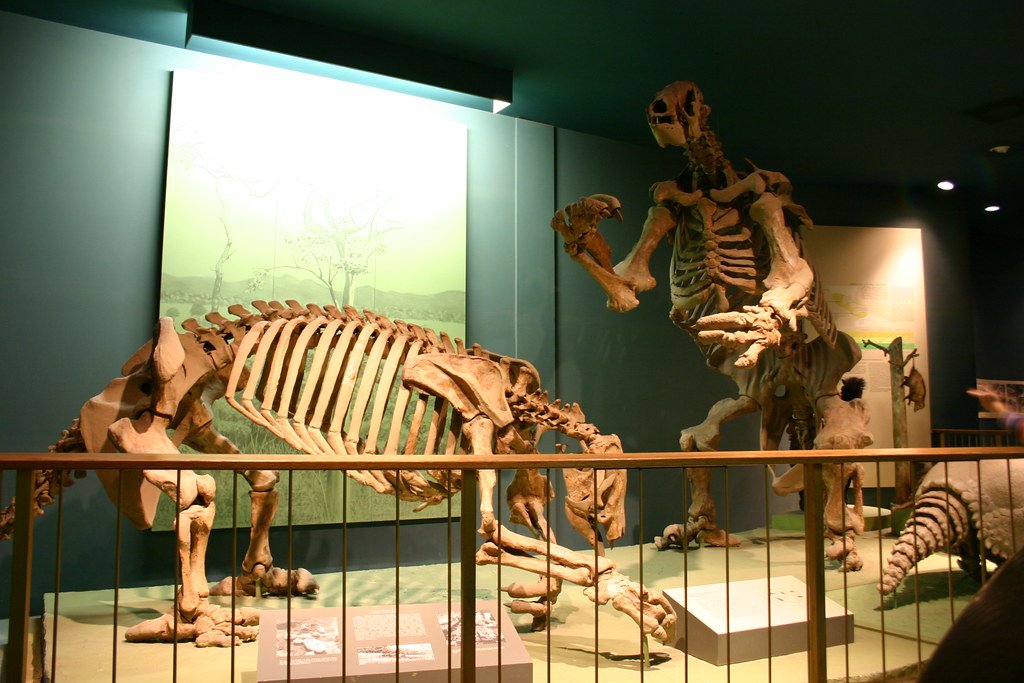
If you ever think of sloths as sleepy tree-huggers, imagine one the size of a small car, lumbering through the swamp with claws as long as your forearm. The giant ground sloths of Florida, like Eremotherium, could stand up to 20 feet tall when reared on their hind legs. Their slow movements made them seem almost dreamlike, yet they were powerful enough to tear down branches and dig massive burrows. Some fossilized burrows in Florida are so large you could crawl inside them, a testament to these sloths’ impressive engineering skills.
Saber-Toothed Cats: Predators of the Muck
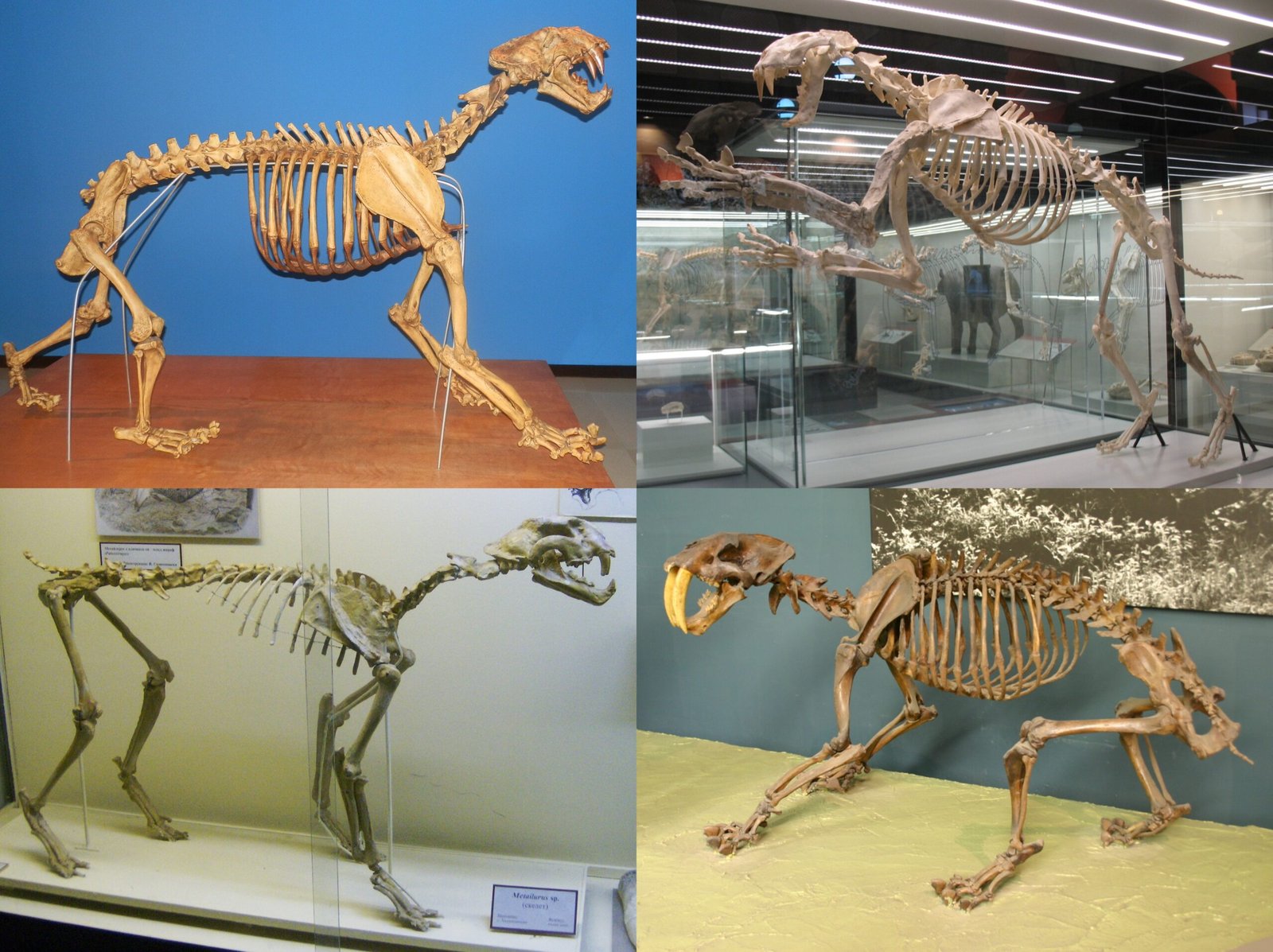
The swamps of ancient Florida hid lethal hunters, none more fearsome than the saber-toothed cat Smilodon fatalis. With dagger-like canine teeth and muscular bodies, these cats could take down prey much larger than themselves. Fossils show they prowled the edges of wetlands, waiting to ambush unwary horses or young mammoths. Their presence in Florida’s fossil record speaks to a harsh world where survival depended on razor-sharp reflexes, even for the biggest animals.
Columbian Mammoths: The Southern Giants

While woolly mammoths have a frosty reputation, their relatives, the Columbian mammoths, preferred the warmer, open landscapes of southern North America, including Florida. These behemoths could reach heights of 13 feet at the shoulder—taller than most basketball hoops. Columbian mammoth fossils are often found in riverbeds alongside the remains of giant tortoises and bison, suggesting these animals shared the floodplains, munching on grasses and wading through muddy waters in search of food.
Glyptodonts: Armored Tanks of the Marsh
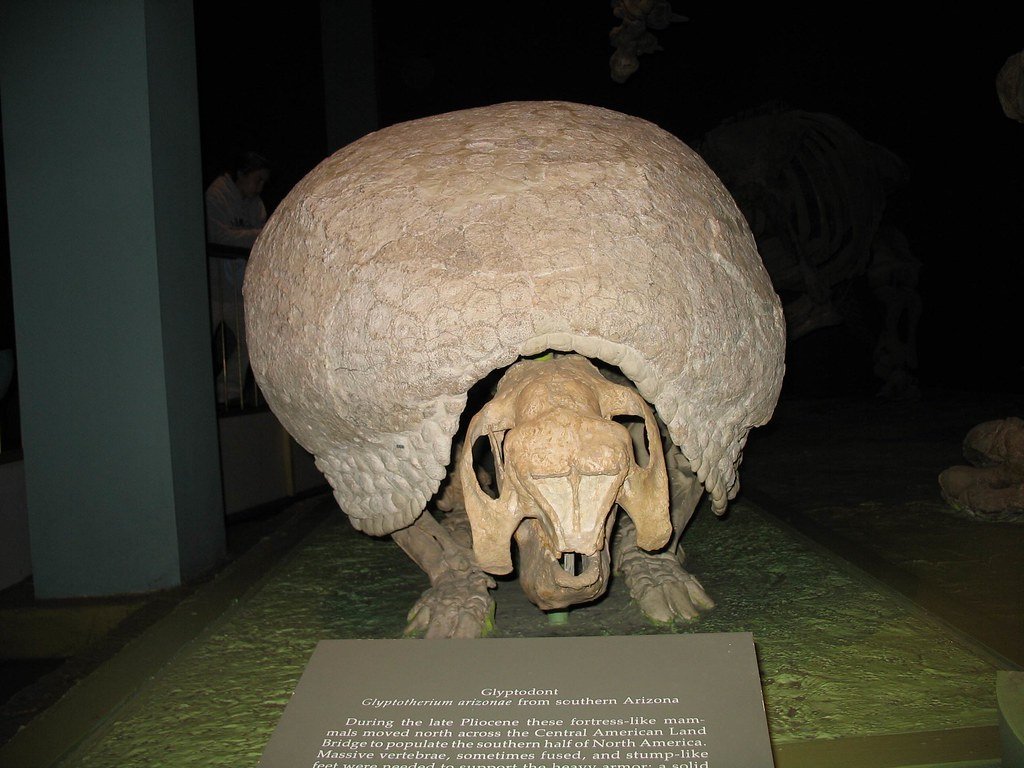
Glyptodonts looked like walking coffee tables covered in bony armor. These prehistoric relatives of armadillos could weigh nearly a ton and sported a heavy, domed shell that protected them from predators. Some even had spiked tails, perfect for swinging at lurking saber-toothed cats. In the softer soils of Florida’s wetlands, their tracks and burrows have occasionally been preserved, offering a glimpse of a world where armor-plated herbivores lumbered through the reeds.
Giant Tortoises: Slow and Steady Swamp Dwellers
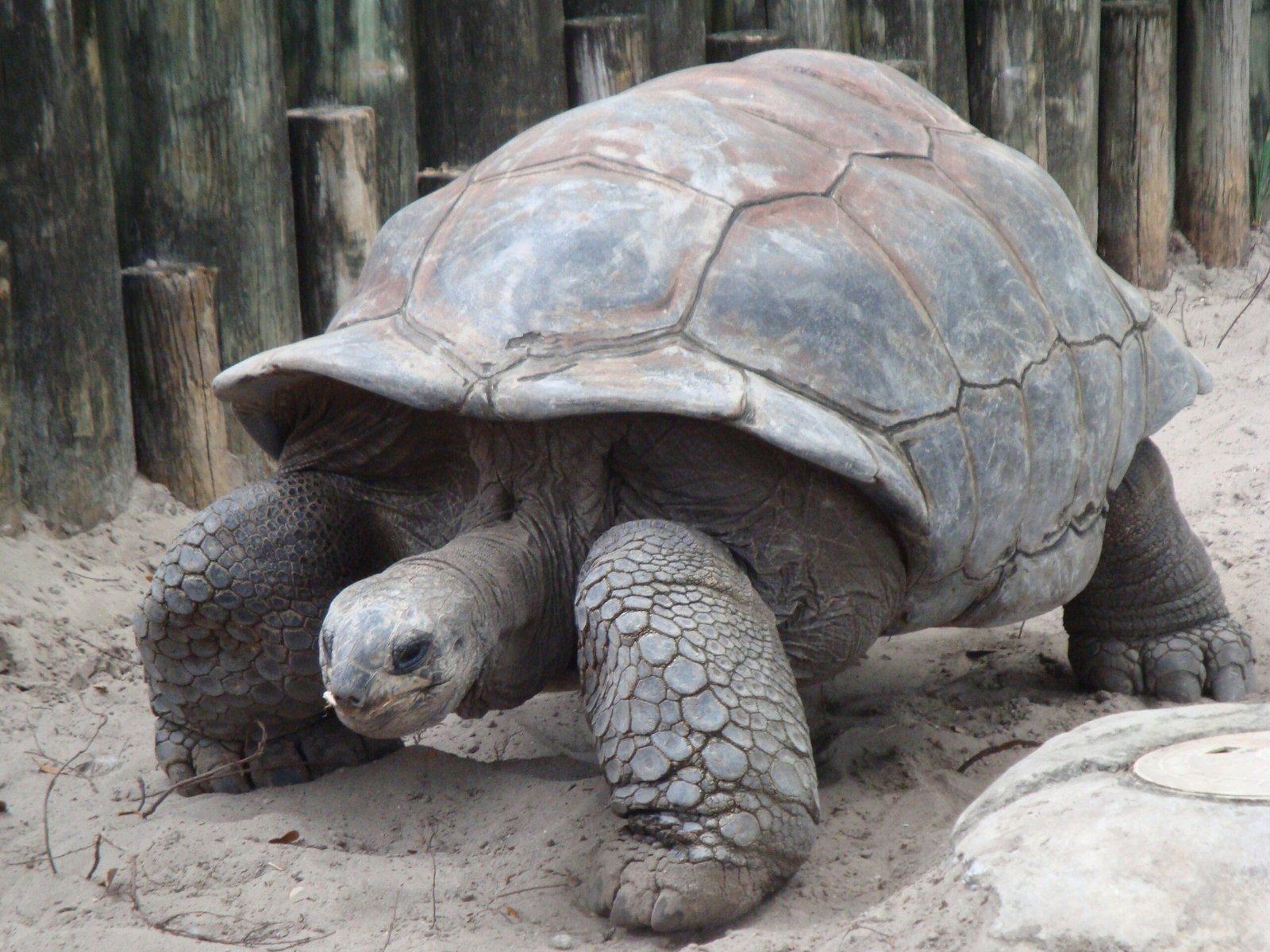
Florida was once home to giant land tortoises, some as big as bathtubs. These slow-moving grazers munched on soft aquatic plants and sometimes wallowed in the mud to cool off. Their broad, flat shells provided a mobile shelter, allowing them to retreat from the scorching sun or occasional predator. Today, their fossilized shells are sometimes discovered in sinkholes, silent witnesses to a slower, gentler pace of prehistoric life.
Dire Wolves: Social Hunters of the Wild

Not just a legend from television, dire wolves were real—and in Florida, they were among the top predators. Larger and heavier than modern gray wolves, dire wolves hunted in packs, using teamwork to bring down giant deer and even young mastodons. Their powerful jaws could crush bone, and fossilized remains sometimes show signs of ancient injuries from fierce battles. The echoes of their howls might still haunt the moonlit swamps in our imaginations.
Short-Faced Bears: Giants Among Bears
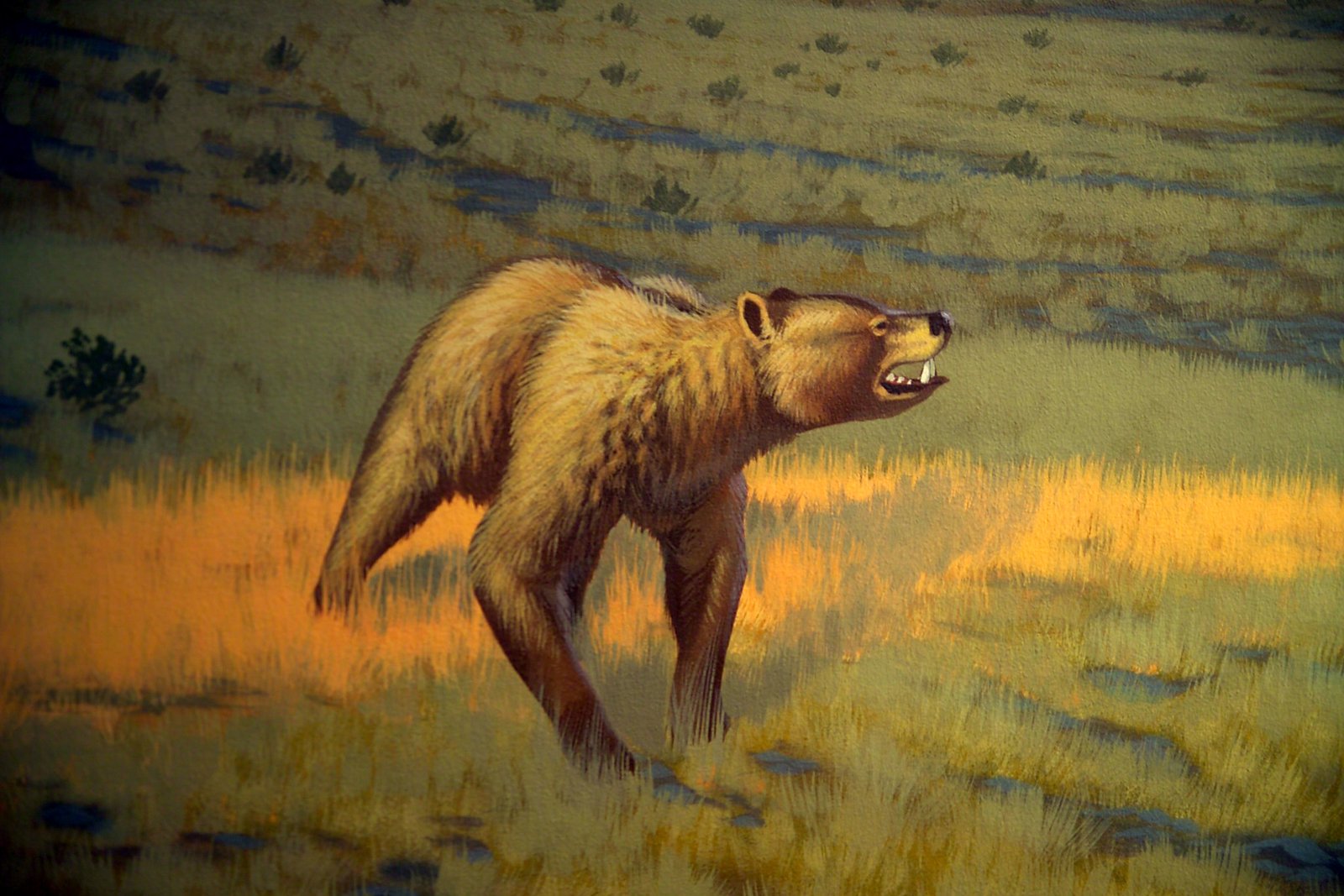
The short-faced bear, Arctodus simus, was a true giant, standing up to 12 feet tall when on its hind legs. With long legs built for running and a keen sense of smell, these bears could cover vast distances in search of food. Their huge size meant they could intimidate other predators, stealing kills from saber-toothed cats or wolves. Fossils found in Florida reveal that these massive bears once wandered the forests and swamps, reigning supreme as the biggest terrestrial carnivores.
Ancient Alligators and Crocodiles: Reptilian Survivors

Long before humans arrived, Florida’s swamps were already home to toothy reptiles. Giant prehistoric alligators and crocodiles slid through the waterways, hunting fish, turtles, and sometimes even the young of larger mammals. Some species, like the extinct Purussaurus, grew much bigger than their modern cousins, with jaws capable of crushing bone and shells. Their fossilized teeth still turn up in riverbeds, sharp reminders of Florida’s reptilian legacy.
Extinct Horses: The Forgotten Herds

It’s hard to imagine herds of wild horses thundering through Florida’s swamps, but several species of extinct horses once grazed the ancient wetlands. Unlike the horses we know today, these had three toes and were adapted for muddy ground. Their bones are frequently found at fossil sites, often alongside the teeth marks of predators. The disappearance of these horses marked a dramatic shift in Florida’s ecosystem, opening the door for other species to flourish.
Tapirs: Oddballs of the Ancient Swamp

Ancient tapirs, with their short trunks and pig-like bodies, were quirky swamp-dwellers. They thrived in Florida’s marshy forests, foraging for fruits and leaves along riverbanks. Tapirs were excellent swimmers, often seen wallowing in the mud to escape predators or cool off during hot spells. Fossilized tapir skulls and teeth are common finds, revealing just how widespread these odd-looking mammals once were.
Giant Armadillos: Diggers of the Deep
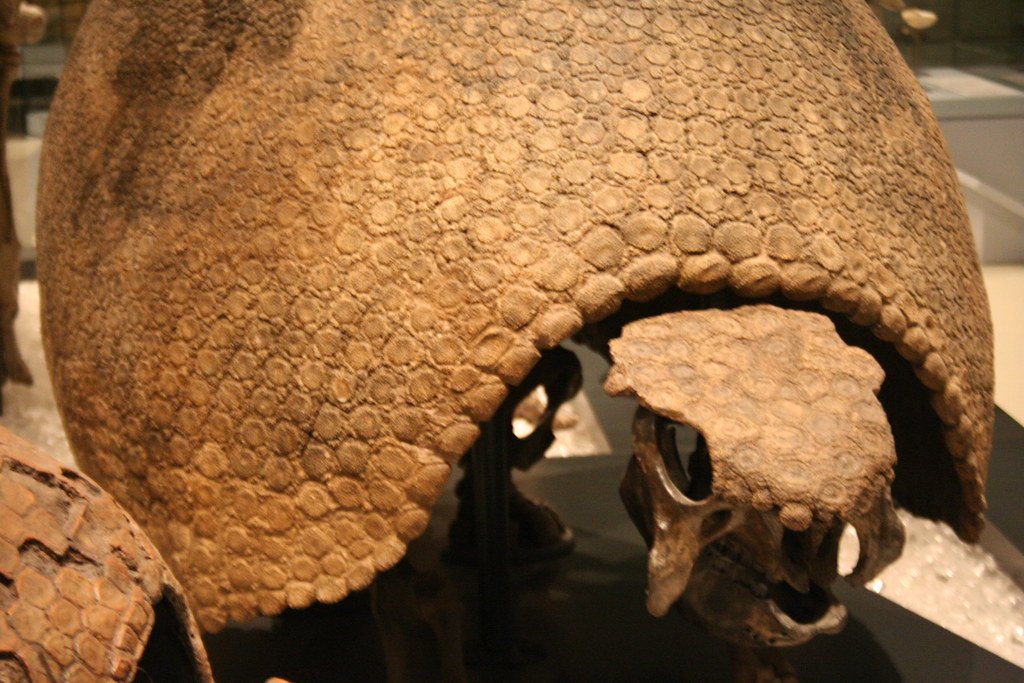
Imagine an armadillo bigger than a Labrador retriever, digging deep burrows in Florida’s soft earth. These giant armadillos used their powerful claws to tear into termite mounds and dig for roots. Their armored shells protected them from hungry predators, and their burrows provided homes for other animals long after the armadillos themselves were gone. Fossilized shells and burrow traces still dot the landscape, silent signs of these ancient engineers.
Prehistoric Bison: Grazers of the Swampy Plains

Before the American bison roamed the Great Plains, their ancestors grazed the lush wetlands of Florida. These massive grazers moved in herds, churning up the soil and shaping the landscape as they searched for grasses and sedges. Their dung added nutrients to the swamp, supporting a web of life that depended on healthy, fertile ground. Today, the bones of ancient bison remind us of a time when Florida’s swamps echoed with the thunder of hooves.
Ice Age Camels: Wanderers of the Wetlands

It might seem strange, but camels once wandered the wetlands of Florida. These ancient relatives of today’s desert-dwellers adapted to a variety of environments, browsing on tough swamp plants and wading through shallow waters. Fossilized camel bones have been uncovered in Florida’s riverbeds, hinting at the wild diversity of the state’s ancient ecosystems. Their extinction marked the end of a surprising chapter in Florida’s natural history.
Prehistoric Birds: Giants of the Sky and Marsh

The swamps weren’t just home to mammalian giants—towering birds like the extinct teratorns soared above the wetlands, hunting small mammals and fish. Some species stood over five feet tall and had wingspans that could shade a canoe. Their bones are delicate but sometimes preserved in peat bogs, offering rare glimpses of these avian hunters. The haunting calls of cranes and storks today echo the presence of their ancient, much larger cousins.
Giant Capybaras: Rodents of Unusual Size
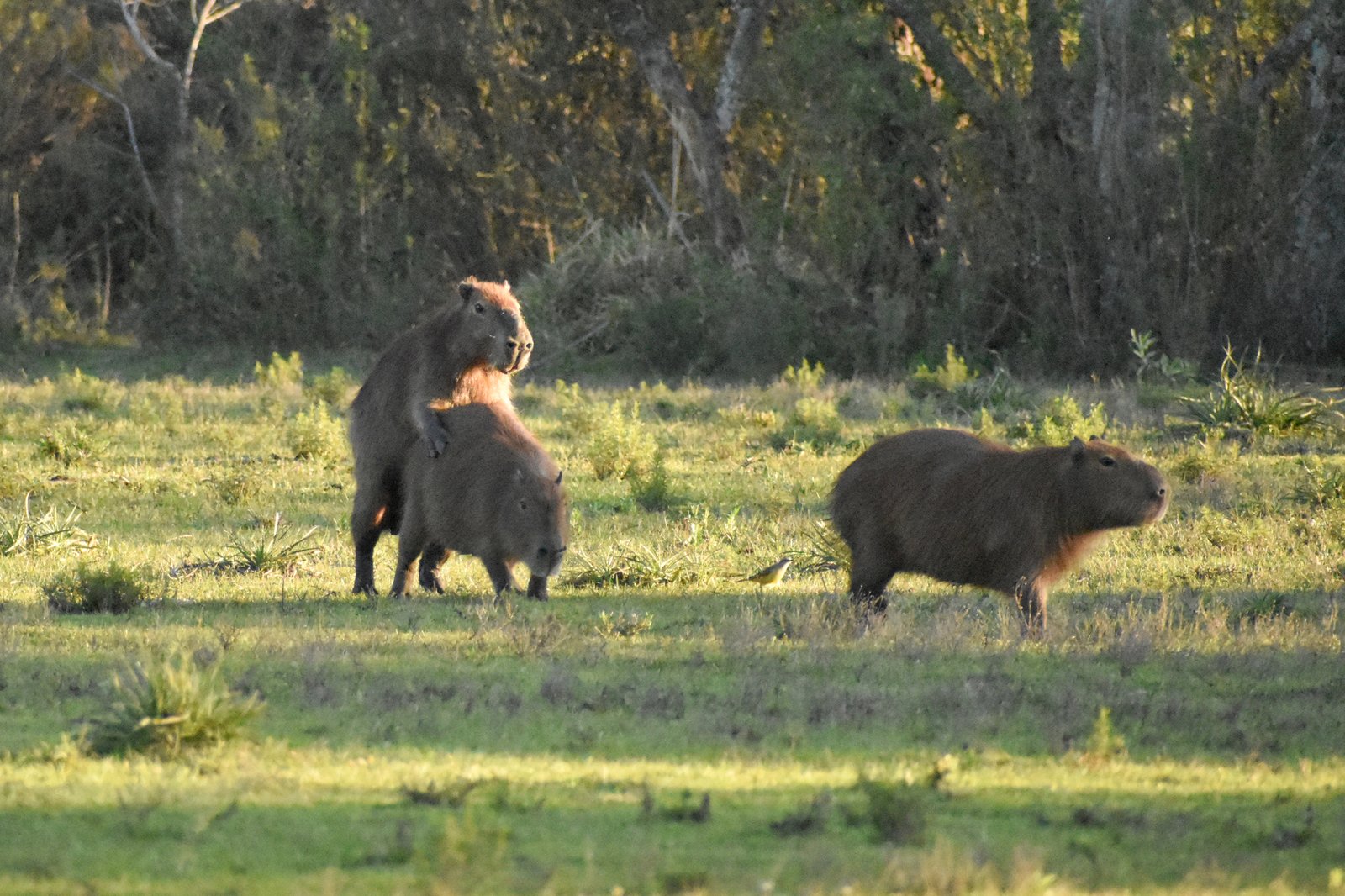
The world’s largest rodents, capybaras, have ancient relatives that once lived in Florida and dwarfed their modern descendants. These enormous rodents grazed on aquatic plants and lounged in the swampy shallows, living in groups for protection. Fossilized teeth and bones show that they were a vital part of the ecosystem, providing food for large predators and helping control the growth of marsh vegetation.
Gomphotheres: The Four-Tusked Wonders
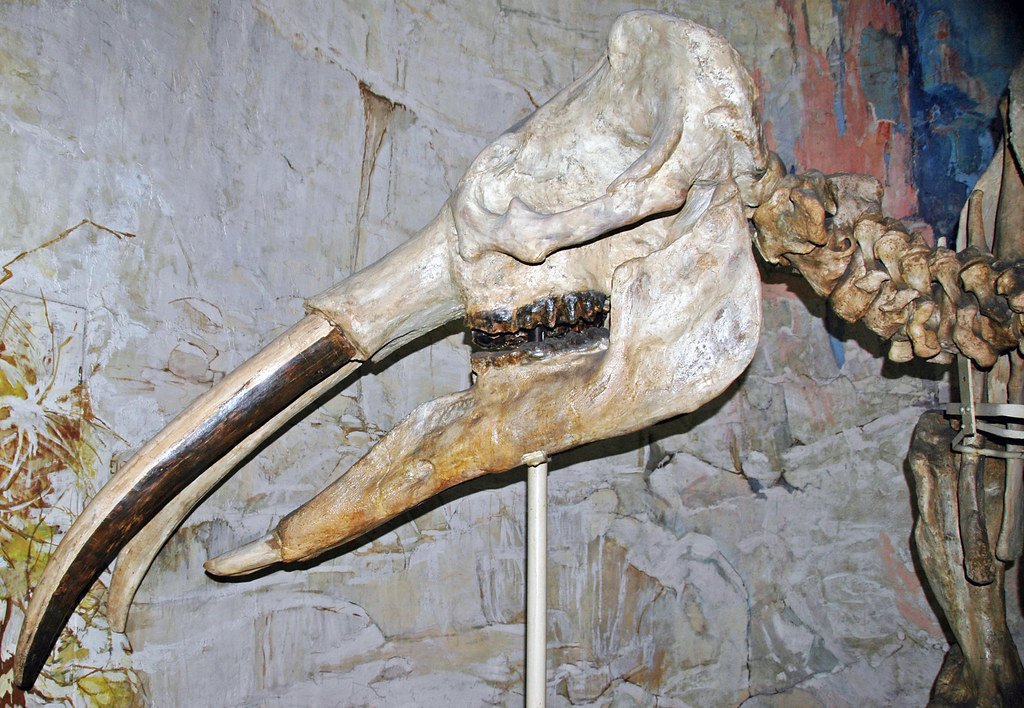
Gomphotheres were odd-looking, elephant-like creatures with four tusks—two on the upper jaw and two on the lower. These gentle giants browsed the wet forests and open marshes, using their trunks to gather water plants and soft grasses. Their unique tusks helped them dig and strip bark, leaving behind distinctive marks that paleontologists still study today. Gomphothere fossils are a rare but thrilling find, a reminder of Florida’s once-diverse elephant family.
Sabre-Toothed Salmon: Monsters of the Ancient Rivers
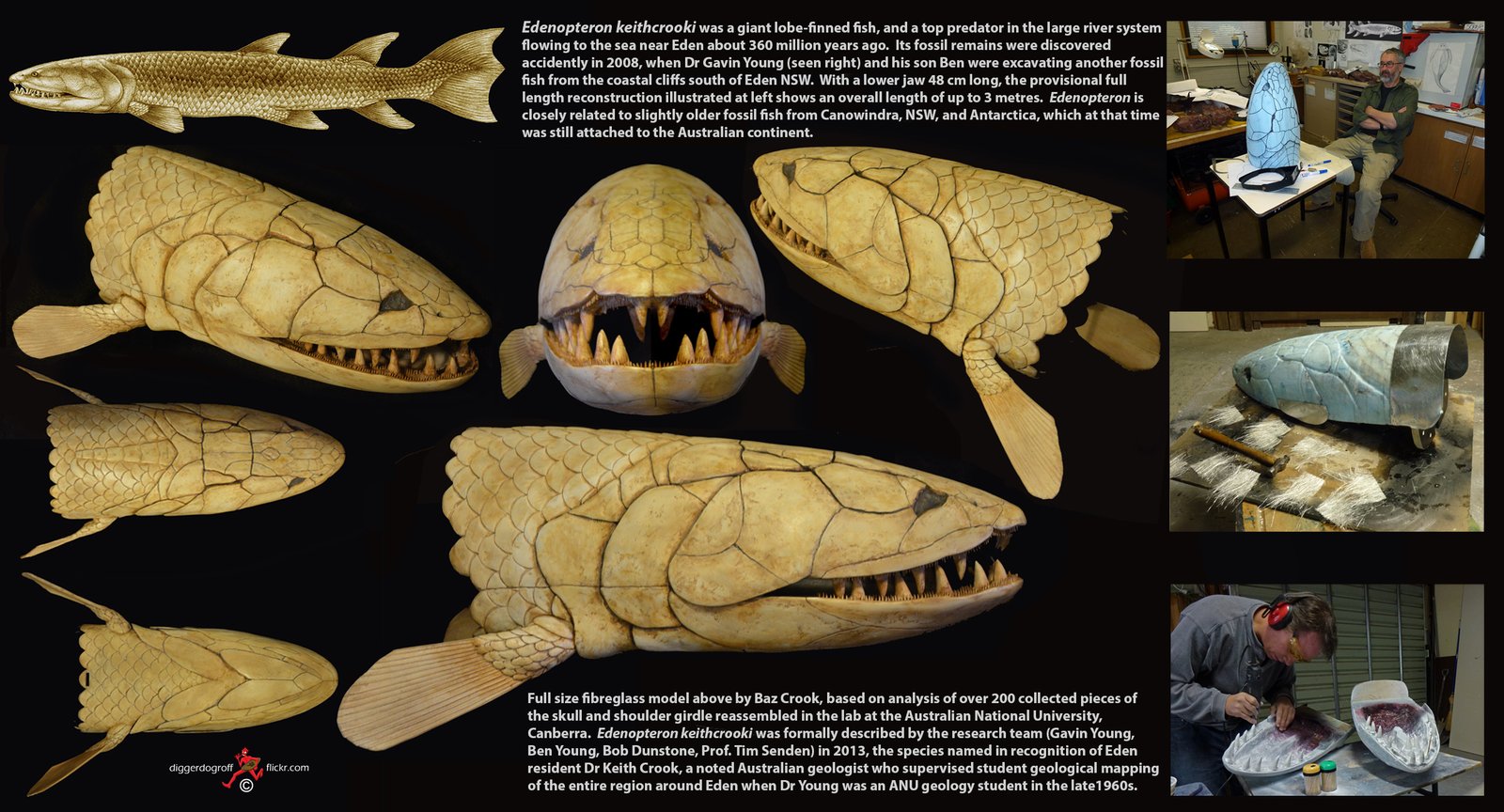
It’s not just land animals that ruled ancient Florida. Giant fish, like the saber-toothed salmon, swam the rivers, reaching lengths of up to ten feet. These bizarre fish had protruding teeth and powerful jaws, making them the undisputed predators of the waterways. Fossilized salmon bones sometimes wash up after heavy rains, a startling reminder that Florida’s swamps were once home to monsters both above and below the water’s surface.
Lessons from a Lost World

The vanished megafauna of Florida’s swamps paint a vivid picture of a wild, ever-changing land. Their fossils tell us that Florida was once a crossroads of climate, evolution, and survival—a place where giants rose and fell as the world shifted beneath their feet. Today, the echoes of these animals linger in the cypress shadows and river mists, urging us to look closer at the world around us and remember the extraordinary creatures that shaped the land we call home. What giants might still be hiding in our modern swamps, waiting to surprise us?


